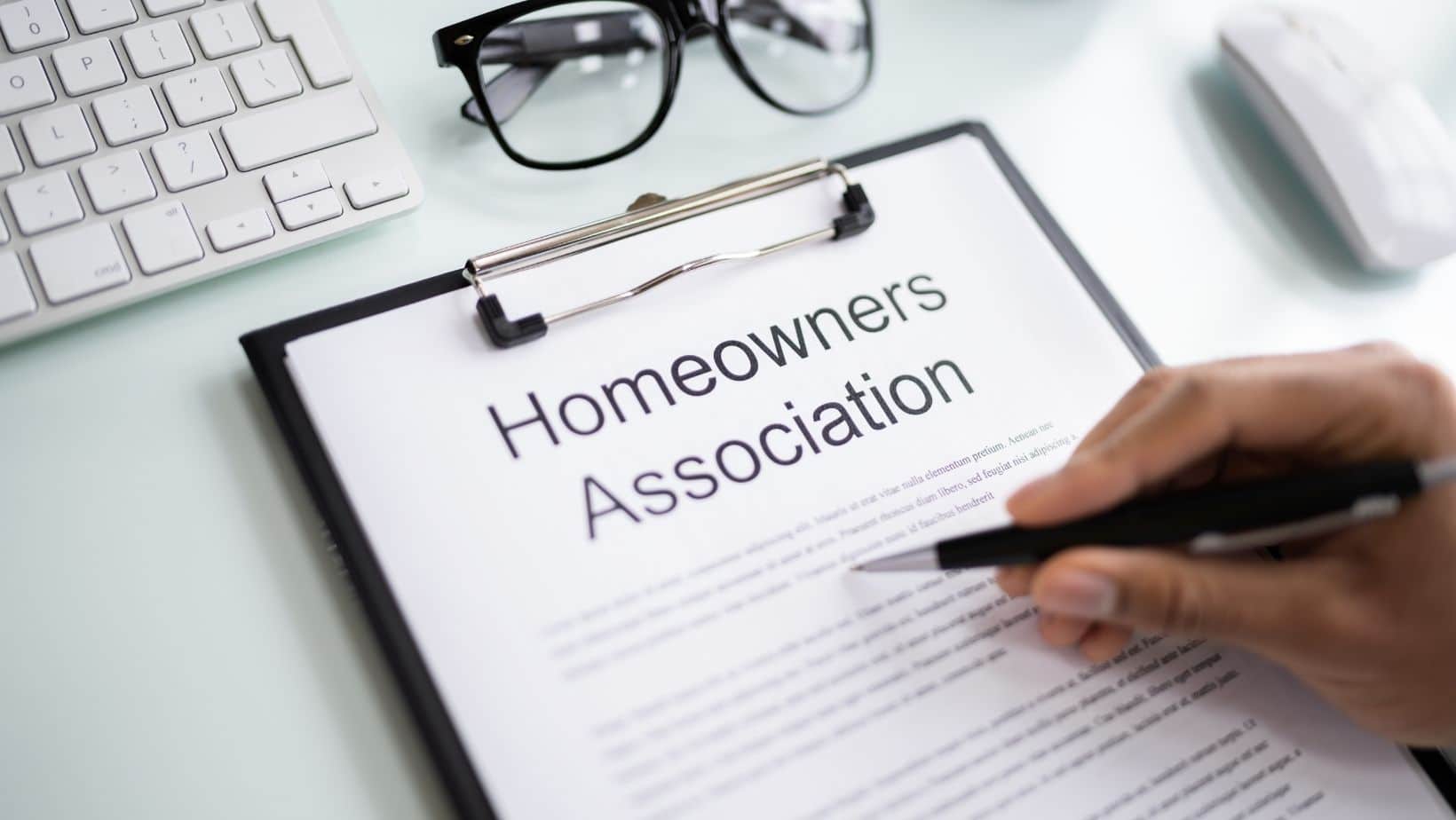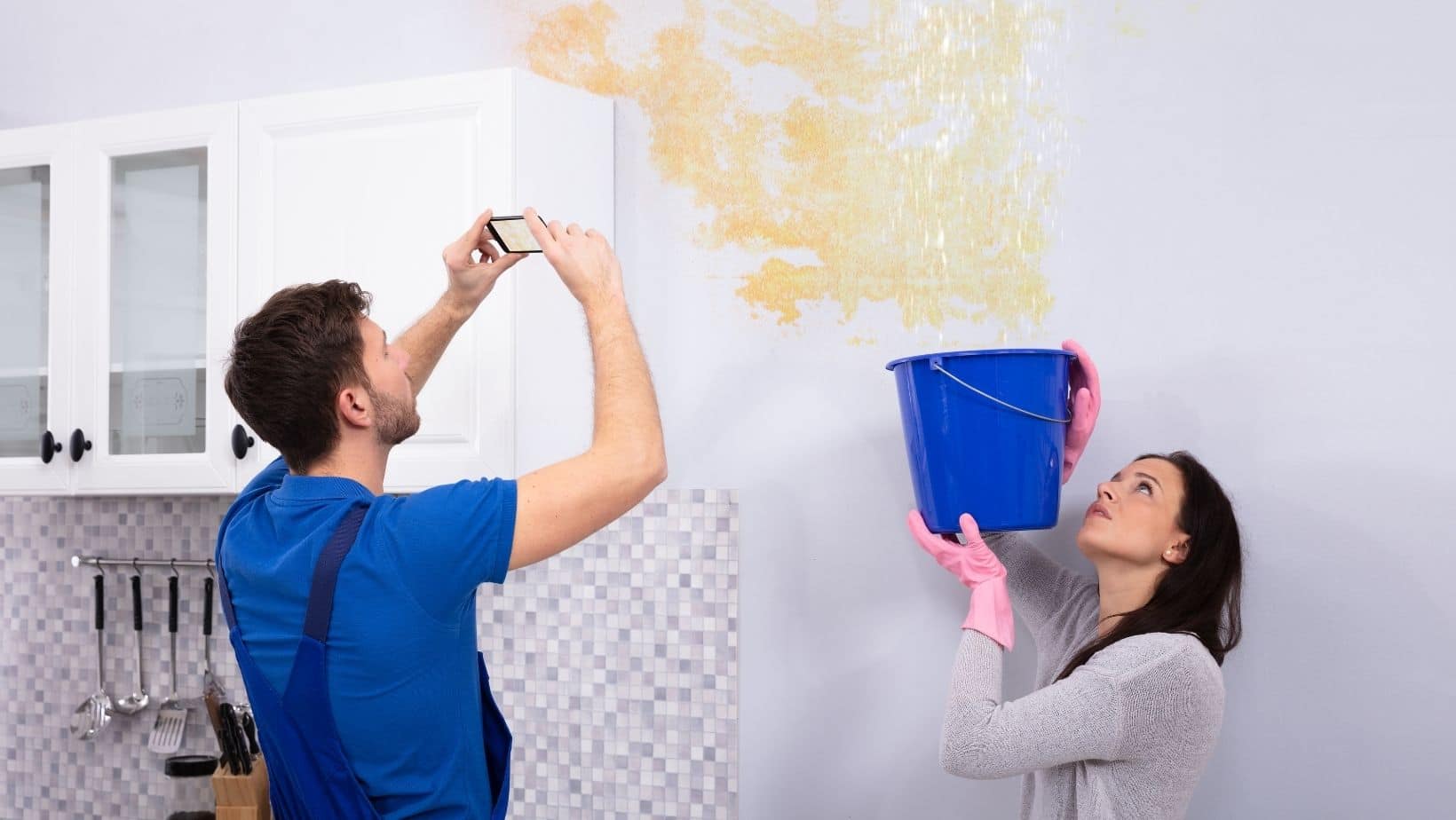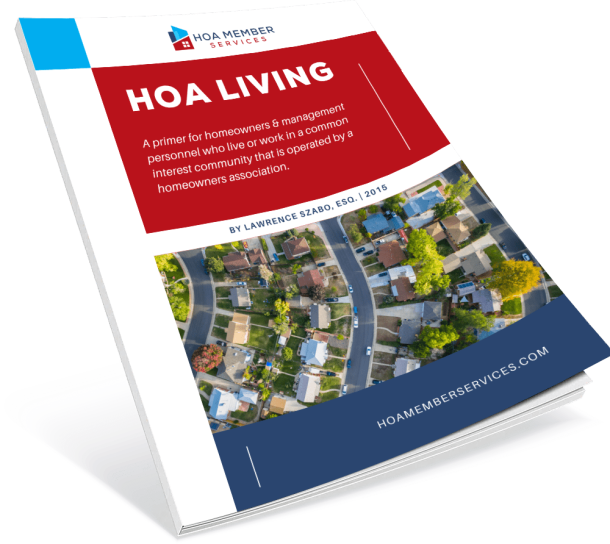Few things cause more panic in a home than water pouring through a ceiling or creeping under the floorboards. It’s messy, costly, and stressful, but for those living in HOA or condo communities, there’s an added layer of confusion: who pays for the damage?
Is HOA responsible for water damage, or does the bill land squarely on the shoulders of the individual unit owner? The answer isn’t always straightforward. It depends on the source of the problem, how your association’s governing documents are written, and what insurance coverage applies.
This article untangles the rules and responsibilities so you’ll know exactly where you stand when water damage occurs. We’ll look at how HOAs handle common areas, what homeowners are expected to maintain, and how insurance companies divide the costs.
The goal is to help you face water damage with clarity instead of uncertainty. So let’s get started.

Understanding the Basics of HOA Responsibility
When water damage strikes in a condo or planned community, the first question homeowners ask is simple: Is the HOA responsible for water damage, or am I on the hook myself?
The reality is that the answer almost always depends on three factors: where the damage occurred, what caused it, and what your association’s governing documents say.
Common Area vs. Individual Unit
Most HOAs divide responsibility between the common area and individual unit ownership.
- Common areas include roofs, exterior walls, hallways, stairwells, and landscaping. These are spaces all residents use, and the HOA is typically responsible for maintenance and repairs here.
- Individual units, on the other hand, belong to the homeowner. Everything inside, flooring, cabinets, and appliances, is usually the responsibility of the unit owner.
Governing Documents as the Rulebook
The governing documents spell out who is liable for specific kinds of damage. Some associations draw very sharp lines. Others leave gray areas, like plumbing pipes hidden in walls that service a single unit but also connect to the wider building system.
When disputes arise, boards, homeowners, and insurance adjusters will all turn to these documents first. Many states encourage HOAs to outline maintenance responsibilities clearly in their charters.
Why It Matters
Knowing these basics before water damage occurs gives you a clearer sense of what’s covered by the HOA’s insurance versus your own policy. It also helps you avoid surprises when the board informs you that repairs fall under your responsibility, not theirs.
Ultimately, understanding the boundaries between common elements and your separate interests is the first step to avoiding conflict and unexpected bills.
Common Sources of Water Damage in Condo and HOA Communities
Not all water damage results in the same consequences. To determine whether the HOA or the homeowner is responsible, it’s helpful to understand the most common causes and how they’re addressed in governing documents and insurance policies.
1. Exterior and Common Area Issues
When the source of damage starts outside the unit, the HOA is often responsible for repairs.
- Roof leaks: A leaky roof can let water seep into multiple units. Because roofs are part of the common area, they typically fall under HOA maintenance.
- Exterior walls and windows: Cracks, worn seals, or storm damage to walls or shared windows often trigger the HOA’s insurance policy.
- Shared plumbing lines: A broken pipe in a wall that serves more than one individual unit may be considered part of the common elements.
Interior and Unit-Specific Causes
When damage starts inside a homeowner’s own unit, the repair usually becomes their responsibility.
- Appliances: Dishwashers, washing machines, or water heaters that fail inside the unit are generally covered by homeowner’s insurance.
- Interior plumbing: Pipes that serve only one single unit fall under the responsibility of that unit owner.
- Negligence: If the damage caused stems from failing to address maintenance issues inside the unit, the homeowner is almost always held liable.
Natural Disasters and Other Perils
Events like heavy storms, floods, or other perils may complicate matters. Some losses may be covered under the association’s insurance coverage, while others may require separate flood or hazard policies.

HOA vs. Homeowner: Where the Line is Drawn
One of the biggest sources of conflict in condo communities is figuring out exactly where the HOA’s responsibility ends and the homeowner’s begins. Water doesn’t respect property lines; it seeps through walls, ceilings, and floors.
So establishing who is liable for repairs is rarely straightforward.
HOA Maintenance Duties
The HOA is generally responsible for water damage in common areas and shared spaces. This includes:
- Roofs, hallways, stairwells, and lobbies.
- Structural components of the building, like exterior walls or foundations.
- Plumbing lines that serve more than one individual unit.
These fall under the HOA’s obligation to maintain common areas and protect the community as a whole. If the HOA fails to meet these maintenance responsibilities, it may even be considered negligence, which can shift liability toward the association.
Homeowner Responsibilities
On the other hand, unit owners are typically responsible for everything inside their separate interest. That includes:
- Appliances and fixtures within the own unit.
- Flooring, cabinets, and personal property.
- Plumbing lines that serve only a single unit.
If damage spreads from one home into another, disputes often arise. In such cases, both the condo owner and the HOA board may need to consult their respective insurance coverage to sort out responsibility.
Gray Areas and Limited Common Elements
Balconies, patios, or pipes inside shared walls are classified as limited common elements. These often create the murkiest situations because they’re technically shared, yet primarily benefit one unit.
Resolution depends heavily on the association’s governing documents and how HOA rules define them.
The Role of Governing Documents
Whenever water damage strikes in a condo community, the very first reference point is the association’s governing documents. These documents, usually made up of CC&Rs (Covenants, Conditions, and Restrictions), bylaws, and HOA rules, form the legal backbone of the community.
They aren’t just paperwork; they’re the rulebook that determines who is responsible for repairing damage, filing a claim, or covering costs.

Why Governing Documents Matter
An HOA’s responsibility doesn’t come down to guesswork. It is spelled out clearly (or sometimes not so clearly) in the governing documents. These define:
- Which repairs fall under HOA maintenance.
- The maintenance responsibilities of each unit owner.
- The treatment of limited common elements, like balconies, patios, or plumbing lines serving multiple units.
- How disputes are handled when damage occurs in gray areas.
Clauses That Shape Responsibility
Typical governing documents state that the HOA must maintain common areas such as exterior walls, roofs, stairwells, and shared plumbing.
By contrast, a condo owner is usually responsible for their separate interest: the flooring, fixtures, and systems inside their own unit.
But things get tricky. For example:
- A broken pipe inside a wall may serve a single unit or multiple units. The governing documents decide whether the HOA or the homeowner pays.
- Water spreading from one individual unit to another might involve both parties, depending on how responsibility is assigned.
Why Homeowners Must Stay Proactive
Too often, disputes arise simply because homeowners never reviewed their association’s governing documents. When maintenance issues are left unaddressed, an HOA board may deny coverage, leaving the unit owner with the bill.
Knowing in advance whether the HOA’s insurance or homeowner’s insurance applies can save thousands of dollars and a great deal of stress.
Insurance and Water Damage: Who Pays?
When water damage occurs, most homeowners discover that repairs aren’t just about fixing what’s broken; they’re about navigating insurance. The biggest question is whether the HOA’s insurance or the homeowner’s insurance policy will pay for the damage.
The answer depends on the source of the problem, the wording in the association’s governing documents, and the type of policy in place.

1. HOA’s Insurance (Master Policy)
The HOA carries what’s known as a master insurance policy. Its primary purpose is to protect the community’s common areas and overall property values. Coverage usually includes:
- Structural components of the building, such as exterior walls, roofs, and foundations.
- Common elements like hallways, stairwells, lobbies, or recreation facilities.
- Systems that serve multiple units, such as shared plumbing lines, electrical wiring, or HVAC.
The extent of coverage varies. A “bare walls-in” policy protects only the shell of the building, while an “all-in” policy may extend to fixtures inside individual units. These differences significantly affect how responsibility is divided when water damage spreads.
2. Homeowner’s Insurance (HO-6 Policy)
Each unit owner is expected to carry their own homeowner’s insurance. An HO-6 policy generally covers:
- Interior finishes, flooring, cabinetry, and appliances inside the own unit.
- Personal belongings like furniture, clothing, and electronics.
- Liability for damage caused to neighboring units.
- In many cases, “loss assessment” coverage that helps pay if the HOA’s deductible is divided among all condo owners.
Why Overlap Creates Confusion
Disputes arise when policies overlap. For example, if a broken pipe inside a wall serves both a single unit and the common area, both insurers may try to deny responsibility.
This is why understanding insurance coverage in detail and how it interacts with maintenance responsibilities is so important. Without clarity, homeowners risk paying costs that could have been covered.
Determining Responsibility After Water Damage Occurs
When water damage occurs , the real challenge isn’t just drying out the carpet, but figuring out who is actually responsible for repairs. The process can feel confusing, but most HOAs and insurance providers follow a similar sequence to assign liability.
Step 1: Identify the Source
The first step is to pinpoint where the damage began. Was it a broken pipe in the common area, a leak from an upstairs individual unit, or a roof failure?
Determining the origin is critical, since liability often hinges on whether the issue started in shared property or inside a separate interest.
Step 2: Review Governing Documents
Once the source is known, the association’s governing documents come into play. These outline maintenance responsibilities and help clarify whether the HOA or the unit owner bears the repair duty.
For example, limited common elements like balconies or plumbing in shared walls may fall under HOA control, but sometimes the responsibility shifts to the homeowner.
Step 3: Consult Insurance Policies
Next, both the HOA and the affected homeowner check their insurance coverage. The HOA’s insurance might cover repairs to structural parts of the building, while the homeowner’s policy covers interior finishes and personal belongings.
If overlap exists, the insurance company may negotiate with the HOA to decide who pays first.
Step 4: Consider Negligence
Responsibility isn’t only about property lines. If the unit owner failed to address maintenance issues inside their home, like ignoring a leaking appliance, they may be deemed negligent.
Similarly, if the HOA neglected regular inspections or failed to repair known maintenance issues, the HOA could be held liable.
In practice, determining responsibility is rarely black and white. It’s often handled on a case-by-case basis, depending on the facts, the documents, and the policies involved.

Practical Scenarios and Case Studies
It’s one thing to read the rules in the association’s governing documents; it’s another to see how they play out when real water damage occurs. Let’s look at a few common situations that highlight how responsibility is determined between the HOA and the unit owner.
Scenario 1: Roof Leak
A heavy storm damages the roof, and water seeps into two top-floor units. Because the roof is part of the common area, the HOA’s insurance is typically responsible for water damage to the structure.
However, the individual unit owners will usually turn to their homeowner’s insurance to cover damaged furniture, clothing, or electronics inside their own unit.
Scenario 2: Burst Pipe Inside a Unit
A broken pipe under a kitchen sink leaks overnight, flooding the unit and damaging the neighbor’s ceiling. Since this pipe serves only a single unit, the unit owner is responsible.
Their policy may also need to cover the damage caused to the neighbor’s home. If the homeowner ignored prior leaks and failed to address maintenance issues, the case for liability becomes even stronger.
Scenario 3: Pipe Inside a Shared Wall
Now imagine a pipe running through a wall between two units. It bursts, affecting both homes. Because this pipe is part of the limited common elements, responsibility depends heavily on the governing documents.
Sometimes the HOA covers repairs to the pipe itself, while the condo owners handle damage inside their units.
What Happens When Disputes Escalate
If neither side agrees on who pays, the matter may end up in small claims court or arbitration. Ultimately, resolution is made on a case-by-case basis, guided by state laws, policy language, and the HOA’s maintenance responsibilities.
How to Prevent Water Damage Disputes
The best way to handle water damage is to prevent it from turning into a battle between the HOA and the unit owner. While leaks and accidents are inevitable, disputes don’t have to be.
Clear communication, proactive care, and strong policies go a long way toward keeping everyone on the same page.
1. Proactive HOA Maintenance
Since the HOA is charged with maintaining common areas, prevention starts at the community level. Regular roof checks, gutter cleaning, and plumbing inspections can stop small leaks before they escalate.
Regular inspections are especially important for older buildings where hidden pipes and structural weaknesses may exist. When the HOA fails to keep up with maintenance responsibilities, homeowners may argue that the association’s negligence caused the problem.
2. Homeowner Responsibilities
On the flip side, each unit owner must handle their own upkeep. Appliances, water heaters, and interior plumbing require attention.
Failing to address maintenance issues inside the individual unit not only risks personal loss but can also create liability if damage caused spreads to neighbors. Homeowners who stay diligent reduce both costs and conflict.
3. Communication and Education
The HOA board should regularly remind homeowners about their responsibilities, especially in areas where limited common elements are involved.
Sending updates, holding annual meetings, and distributing easy-to-read maintenance checklists can prevent misunderstandings about the HOA’s responsibility versus the homeowner’s.
Why Prevention Protects Everyone
Ultimately, prevention protects more than just walls and floors; it safeguards property values and keeps insurance premiums in check. By working together, HOAs and individual unit owners can avoid costly repairs, insurance disputes, and unnecessary trips to court.
When both sides commit to proactive care, disputes over who is responsible for water damage become far less common.

What Homeowners Should Do if Water Damage Happens
Even with the best precautions, water damage can still strike. When it does, homeowners need to act quickly. Delays only increase repair costs, complicate insurance coverage, and make disputes with the HOA harder to resolve.
Step 1: Stop the Source and Protect Property
If a broken pipe or appliance leak is the cause, shut off the water immediately. Move valuables, furniture, and electronics out of harm’s way. Remember, as a unit owner, you’re usually responsible for protecting your own belongings inside your individual unit.
Step 2: Document Everything
Take photos, videos, and written notes as soon as water damage occurs. Whether it’s a ceiling stain, warped flooring, or damage caused to a neighbor’s unit, documentation is critical. You’ll need it when filing a claim with your insurance company or when presenting evidence to the HOA board.
Step 3: Notify the HOA and Your Insurer
Immediately report the issue to both your HOA and your homeowner’s insurance provider. The HOA needs to know if the common area or limited common elements are involved, while your insurer will guide you on covered repairs inside your own unit. Prompt communication helps establish who is responsible.
Step 4: Cooperate with Inspections
Expect visits from adjusters, contractors, or the management company. Their role is to assess damage, verify the source, and determine liability. Cooperating ensures faster resolutions and avoids the appearance of negligence.
Step 5: Review Governing Documents and Policies
Finally, revisit your association’s governing documents and compare them with your policy. This will clarify whether the HOA’s insurance or your personal coverage applies. If disputes arise, mediation or even small claims court may be necessary, but being informed gives you the upper hand.
Frequently Asked Questions (FAQs)
- What repairs are HOA responsible for?
In most communities, the HOA is responsible for maintaining and repairing common areas and common elements. This includes roofs, exterior walls, hallways, and shared plumbing lines. If damage occurs in these spaces, it usually falls under the HOA’s insurance.
- Who is responsible for pipes in condo walls?
This depends on whether the pipe is considered part of the common area or serves only one individual unit. If it supplies multiple units, the HOA is typically responsible. If it serves just one single unit, the unit owner must handle both the repair and any damage caused.
- Does condo insurance cover water damage to other units?
Often, yes. If a condo owner’s appliance or pipe leak damages a neighbor’s property, their homeowner’s insurance may cover the repairs. However, if the homeowner fails to address maintenance issues, their negligence may leave them liable for all costs.
- Is HOA responsible for water damage in Florida?
In Florida, as in other states, state laws and the association’s governing documents control. Generally, the HOA handles common elements, while the unit owner is responsible for their separate interest.
- Is HOA responsible for water damage in Texas?
Texas follows similar principles. The HOA covers common areas, while the unit owner manages their interior. Disputes are resolved based on maintenance responsibilities outlined in the documents.
- What if disputes cannot be resolved?
If neither side accepts responsibility, homeowners may need to turn to mediation, arbitration, or small claims court to settle the matter on a case-by-case basis.
The Bottom Line
Water damage in an HOA or condo community can feel overwhelming, but the path to resolution is clearer once you understand how responsibility is divided. The key questions always come back to: where did the damage start, what do the association’s governing documents say, and how does insurance apply?
The HOA is typically responsible for common areas and shared systems, while the unit owner handles their individual unit and personal property. Gray areas, like limited common elements or shared plumbing, are decided on a case-by-case basis, often influenced by state laws, insurance language, and whether either party failed to address maintenance issues.
Preparation makes all the difference. Reviewing your governing documents, keeping your homeowner’s insurance current, and staying proactive with maintenance helps avoid costly surprises. Acting quickly when damage occurs protects both your home and your peace of mind.
At the end of the day, water may spread quickly, but conflict doesn’t have to. Clear knowledge and timely action can keep disputes manageable.
Looking for deeper guidance?
Our site provides practical resources, step-by-step guides, and even unlimited personal support from an HOA attorney through our membership plans, so you’ll never face these challenges alone.
Become a member today to make your HOA life easier!


